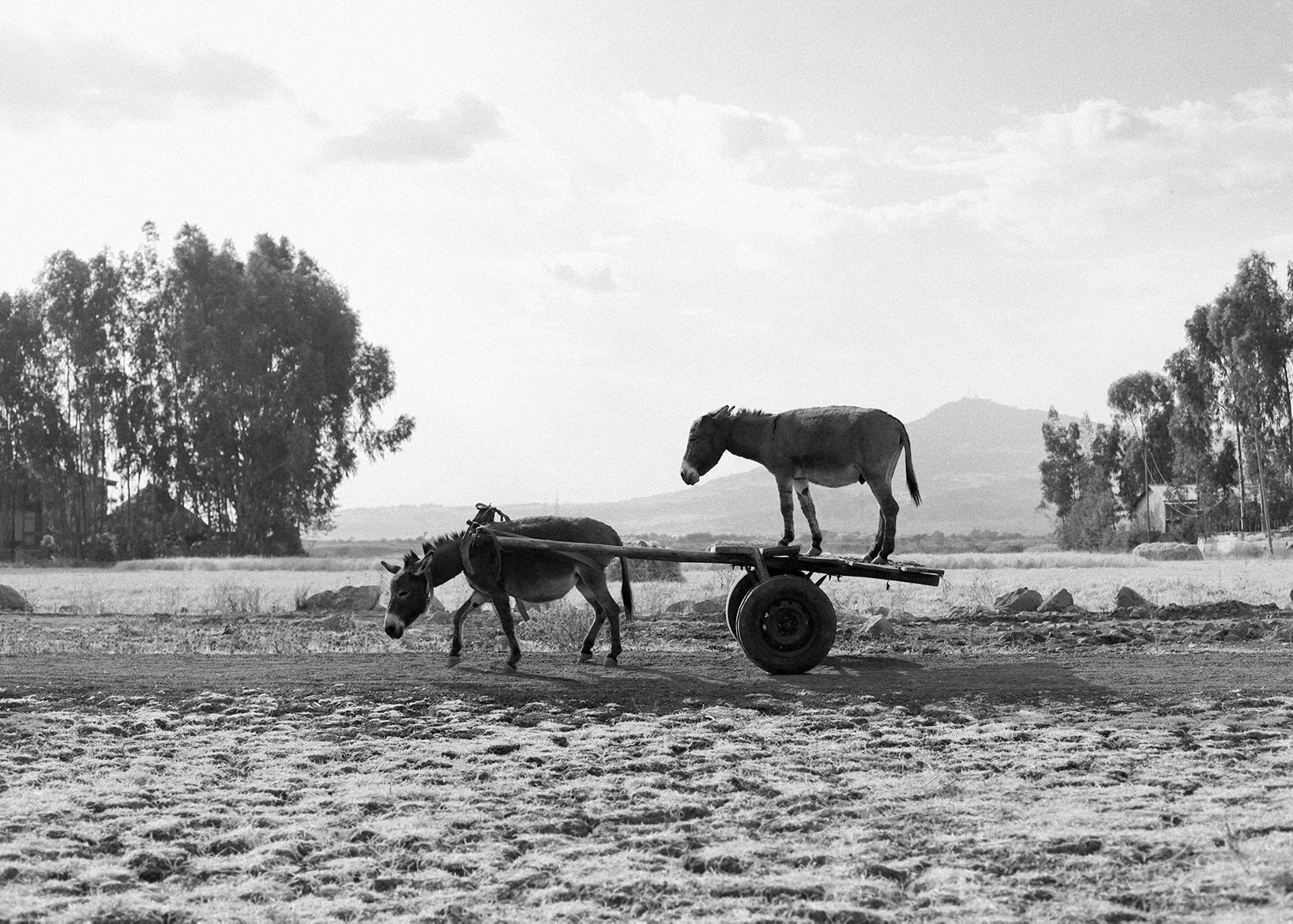Zwei Esel Ethiopia, 2012


Zwei Esel, 2013 | inkjet print, 50 x 70cm
The photograph Zwei Esel (2012) shows two donkeys and a wooden cart. One donkey is perched on the cart and is being pulled by the other through an agricultural landscape in Ethiopia. Substantial training was required before the animals were willing to perform this action for the camera. “For psychologist James J. Gibson (1904–1979), the notion of illusion was a deeply flawed concept. He defined illusion as only functioning from a fixed point of view with a limited field of vision, or “aperture vision.” In contrast, in Gibson’s ecological theory of perception—which posed a radical challenge to the reigning behaviorist research of his day—the movement of an animal and its given “environment,” i.e. surroundings, are mutually constitutive of perception. Looking at things from a fixed stationary point is not the natural mode of vision, and our perceptual system is shaped by the structure and materiality of our surroundings: “Observation implies movement, that is locomotion with reference to the rigid environment, because all observers are animals and all animals are mobile. Plants do not observe but animals do.”